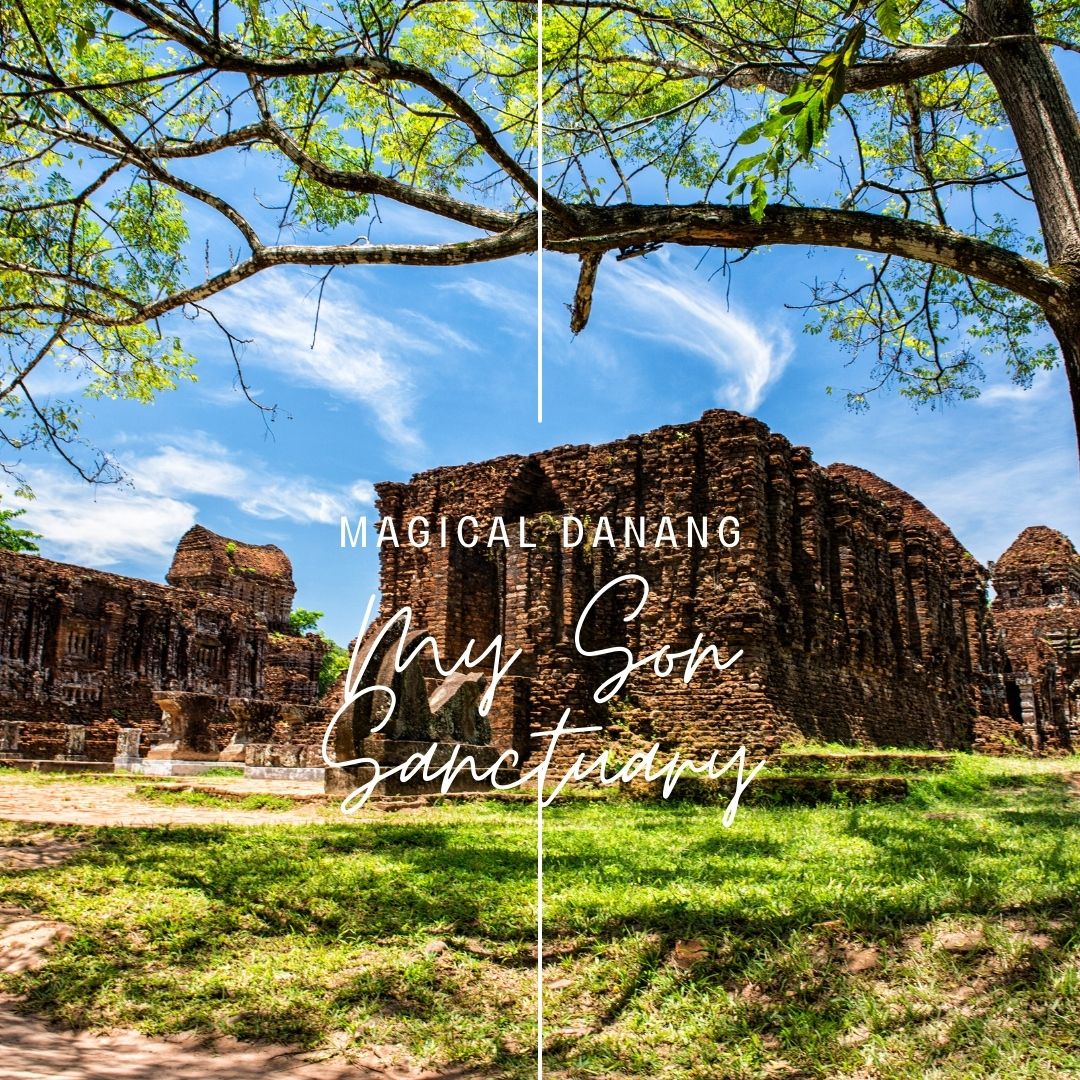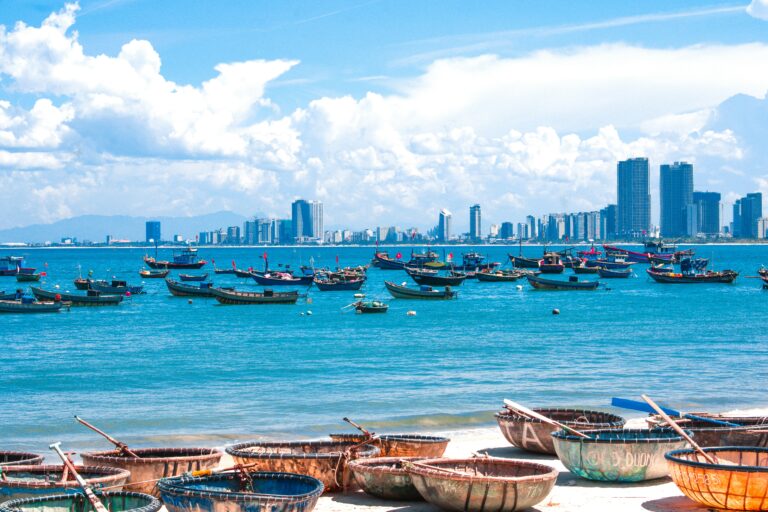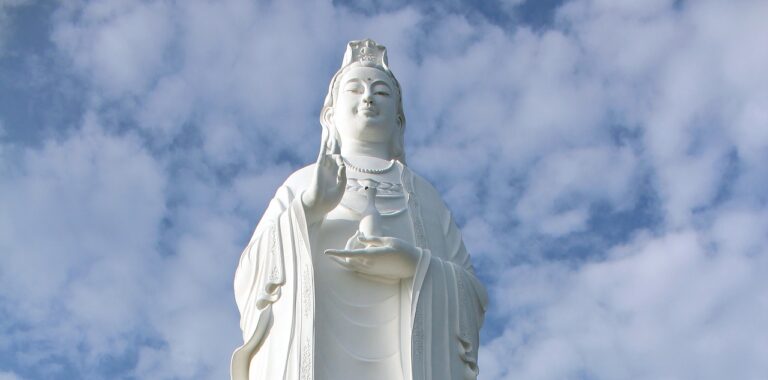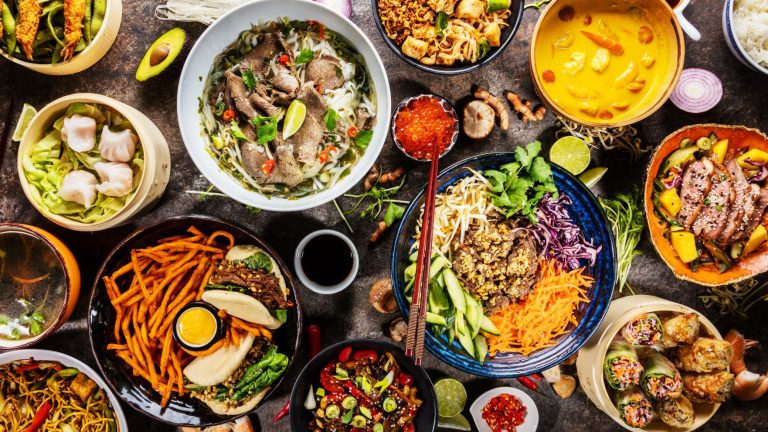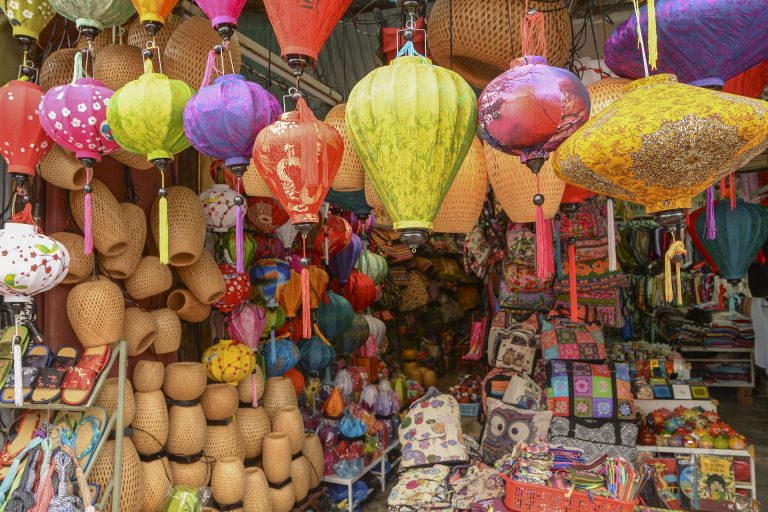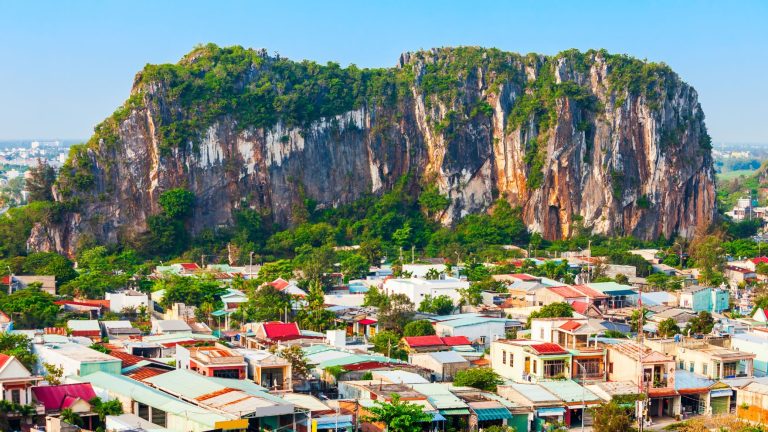Discover the Ancient Beauty of My Son Sanctuary: A Journey Through Vietnam’s Champa Heritage
Tucked away in a lush, jungle-covered valley just an hour’s drive from Da Nang, My Son Sanctuary is a mesmerizing site that takes visitors on a journey back in time to the heart of the ancient Champa Kingdom. Designated as a UNESCO World Heritage Site, My Son Sanctuary is considered one of Vietnam’s most significant cultural treasures, showcasing a complex of red-brick Hindu temples and monuments that were once the spiritual and political center of the Cham civilization.
In this article, we’ll guide you through the history and significance of My Son, what makes it such a captivating destination, and why it should be at the top of your list when visiting Central Vietnam. Read on to discover the hidden wonders of My Son Sanctuary and why it’s a must-see destination for history enthusiasts, architecture lovers, and anyone eager to explore Vietnam’s fascinating cultural heritage.
1. A Brief History of My Son Sanctuary
Dating back as early as the 4th century, My Son Sanctuary was the religious and cultural heart of the Champa Kingdom, which ruled central and southern Vietnam for over a thousand years. This site served as a sacred place where Cham kings were crowned and where they built their temples to honor the Hindu deity Shiva, who was worshipped under various names such as Bhadresvara.
The complex originally housed over 70 temples and towers, intricately built using advanced brick construction techniques that are still a mystery to this day. Each structure was richly decorated with detailed bas-reliefs depicting Hindu gods, mythological scenes, and motifs inspired by Cham art and architecture. Over the centuries, the temples at My Son fell into disrepair, but the site remained an important symbol of the Cham people’s spirituality and cultural identity.
During the Vietnam War, My Son Sanctuary suffered extensive damage, with many temples and monuments destroyed or heavily scarred. Despite this, the site still retains its haunting beauty and historical significance. The ruins, set against a backdrop of misty mountains and lush greenery, create a mystical atmosphere that transports visitors back to the time when My Son was a thriving center of culture and worship.
2. What Makes My Son Sanctuary Unique?
Architectural Splendor and Craftsmanship
The beauty of My Son lies in its unique Champa architecture, which blends elements of Indian Hinduism with indigenous Cham artistry. Each temple and tower is a masterpiece of craftsmanship, built using a distinctive method that has puzzled historians and archaeologists for years. The red bricks used to construct the temples were fired without mortar, and yet they have endured for centuries, fitting together seamlessly to create a solid structure.
Intricate carvings adorn the temple walls, depicting Hindu deities such as Shiva and Vishnu, sacred animals, and scenes from Cham mythology. These exquisite details, coupled with the ruins’ rugged charm, reflect a high level of skill and artistic vision, showcasing the sophisticated culture of the Champa Kingdom.
A Sacred Spiritual Site
My Son Sanctuary was not just a political center; it was also a place of spiritual significance for the Cham people. The temples were designed to represent Mount Meru, the mythical home of Hindu gods, and the complex served as a pilgrimage site for devotees. The sanctuary’s layout, with its towers and shrines arranged in clusters, symbolizes the sacred geography of the Hindu cosmos, making it a place of deep spiritual meaning.
Today, My Son remains a sacred site for the Cham people and a testament to their rich cultural heritage. Visiting the sanctuary offers a rare opportunity to connect with Vietnam’s ancient past and gain insight into the religious beliefs and practices of one of Southeast Asia’s oldest civilizations.
A Photographic Dream
Surrounded by lush jungle and towering mountains, My Son Sanctuary is a photographer’s paradise. The red-brick temples, partially covered in moss and vegetation, create a striking contrast against the vibrant greens of the forest. The best time to visit is in the early morning, when the mist hangs low in the valley and the ruins are bathed in soft, golden light. As you wander through the site, the serenity and beauty of My Son will inspire you to capture every angle and detail of this enchanting place.
3. Exploring the Highlights of My Son Sanctuary
While many of the original structures have been lost to time and war, My Son still boasts several impressive clusters of temples and monuments. Here are some of the key highlights to explore during your visit:
Group B, C, and D Temples: The Heart of My Son
These clusters are the oldest and most significant sections of the sanctuary, showcasing the finest examples of Cham architecture and artistry. The Main Tower (Kalan) in Group B, dedicated to the god Shiva, is a towering structure adorned with ornate carvings and reliefs that depict Hindu deities and celestial dancers. The surrounding towers and shrines, built in a similar style, form a stunning ensemble that offers a glimpse into the grandeur of My Son’s golden age.
Group G Temples: A Restoration Success Story
The temples in Group G were heavily damaged during the war, but recent restoration efforts have brought many of them back to life. The painstaking work by Vietnamese and international experts has helped preserve the site’s unique architectural features and intricate carvings, making this cluster a symbol of resilience and hope.
Group A Temples: Traces of War
Once the largest and most elaborate group at My Son, the Group A temples were almost completely destroyed during bombing raids in the Vietnam War. Today, only a few remnants and foundations remain, but they serve as a poignant reminder of the site’s turbulent history and the efforts to restore and preserve its cultural legacy.
4. Tips for Visiting My Son Sanctuary
- Visit Early in the Morning: Arriving early (around 7:00 AM) not only allows you to explore the site before the crowds arrive but also lets you experience My Son at its most magical, with soft morning light and a peaceful atmosphere.
- Wear Comfortable Shoes: The sanctuary’s uneven terrain and grassy paths can be challenging to navigate, so comfortable walking shoes are essential.
- Bring Insect Repellent: As My Son is located in a forested valley, mosquitoes can be common, especially during the rainy season.
- Join a Guided Tour: A knowledgeable guide can greatly enhance your visit, providing historical context and fascinating stories about the significance of each temple.
5. How to Get to My Son Sanctuary
My Son Sanctuary is located about 40 kilometers southwest of Da Nang and 30 kilometers from Hoi An, making it an easy day trip from either city. You can reach the site by renting a motorbike, hiring a private car, or joining an organized tour that includes transportation, guided commentary, and often a scenic boat ride back to Hoi An.
6. Why You Should Visit My Son Sanctuary
Visiting My Son Sanctuary is more than just a sightseeing excursion—it’s an opportunity to step into a world of ancient history, art, and spirituality. The serene atmosphere, coupled with the beauty of the surrounding landscape, makes My Son a place where you can reflect on the past and appreciate the enduring legacy of the Champa people.
For history enthusiasts, culture seekers, and travelers looking to go beyond the usual tourist sites, My Son offers a unique and enriching experience that will deepen your understanding of Vietnam’s diverse cultural heritage. The magic of My Son lies not only in its impressive architecture but also in its ability to transport visitors back to a time when the Champa Kingdom flourished as a beacon of art and religion in Southeast Asia.
Book a tour with us today to discover the ancient wonders of My Son Sanctuary with a local expert guide. Let us take care of the logistics so you can fully immerse yourself in the history and beauty of this extraordinary site. Explore the hidden treasures of My Son, and experience a side of Vietnam that few get to see!

